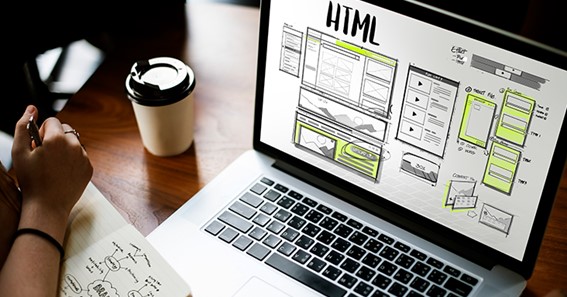-
Rounding of corners
Intersections and connecting strokes inevitably form corners. Straight, as inT,H, E, or sharp, as in A, V, Z, N. Also, the end of each stroke has its own outline: pointed, rectangular or rounded. Corners, intersections and edges are natural visual stimuli. Every corner needs to be noticed and focused, without this skill our ancestors would have constantly bumped into sharp stones and branches. Therefore, the sharper the corners in the inscription, the easier it attracts attention.
Replacing the usual, expected corners of letters with rounded ones reduces visual stress and is associated with smooth, pleasant-to-the-touch surfaces. It causes positive emotions and feelings of comfort. Also, rounded letters work with our primal instincts, because roundness is the basis of baby shape, i.e. the shape of a cub. Therefore, bold and rounded font design is so suitable for baby food, shampoos, and diapers. And round, in combination with some handiwork, makes the font look like food: buns, ice cream, fruit, etc.
Click here – What Is A Ball Stretcher?
Sharpening of corners and edges of strokes attracts increased attention and creates tension and even discomfort. But it can be useful if you sell “thrills”, surprise, shock. That’s why “spiky” fonts are so often found in teenage products, paraphernalia of metalheads and other subcultures.
-
Italics and slants
Italic and slanted strokes are often found in modern font families in addition to straight strokes. At the same time, they have different functions and content.
Cursive drawings (Italic) differ from straight lines in a more handwritten form because they come from the common Italian handwriting of the Renaissance. From the 16th century to the present day, italics are used for highlighting the text. Slanting indicates a change in intonation when reading. In addition, the handwritten form of the letters has fewer straight lines and more graceful curves, which gives the selected phrase a pleasant polite character. Anything resembling handwriting seems more personal and trusting than straight “printed” letters, so most greetings and invitations use handwritten fonts or close-to-handwritten italics with notched fonts.
Oblique strokes are made by slanting straight letters and serve mainly to add a sense of speed to the inscription, but sometimes also for highlighting the text. After beveling, all vertical lines become oblique, and even round shapes at an angle lose some of their uniqueness. A more monotonous inscription, as if tilted by the wind, is perceived as something fast and rapid. Therefore, slanted fonts are a good choice for sports or automotive themes.
Click here – What Is The Wonderland System?
Summary
- The rounding of the corners affects the level of tenderness, from sleeping babies (Strong Rounding) to noisy teenagers (Aggravation).
- Italics and italics ask for a moment’s attention: to clarify politely (Italic) or to inform urgently (Oblique).
In addition to the listed internal qualities, technological fonts also have external ones. The interaction of letters, words, lines, and text strips with each other and with the surrounding space is called typography. Its influence on the viewer will be discussed in the following articles.
